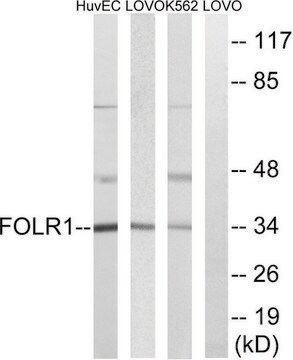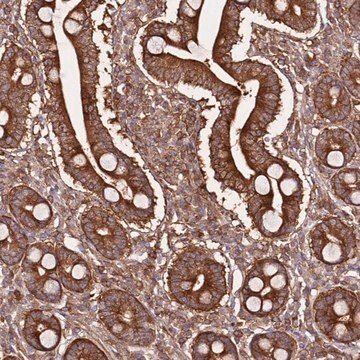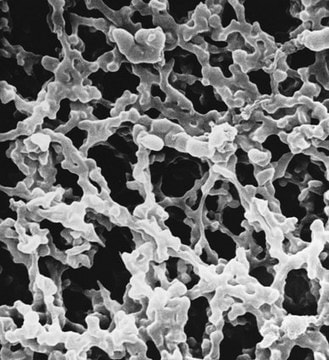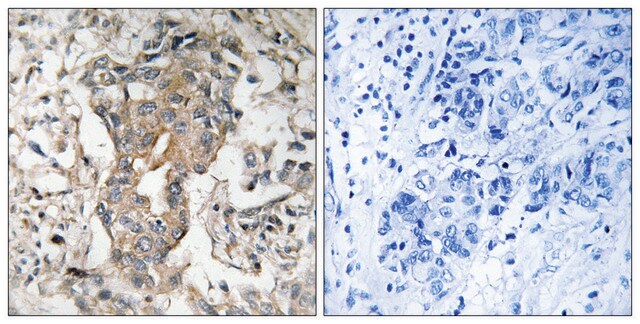SAB1404669
Monoclonal Anti-UNC119 antibody produced in mouse
clone 2F9-2A9, ascites fluid
Synonim(y):
HRG4
About This Item
Polecane produkty
pochodzenie biologiczne
mouse
Poziom jakości
białko sprzężone
unconjugated
forma przeciwciała
ascites fluid
rodzaj przeciwciała
primary antibodies
klon
2F9-2A9, monoclonal
masa cząsteczkowa
antigen ~52.51 kDa
reaktywność gatunkowa
human
metody
indirect ELISA: suitable
western blot: 1:500-1:1000
izotyp
IgG1κ
numer dostępu NCBI
numer dostępu UniProt
Warunki transportu
dry ice
temp. przechowywania
−20°C
docelowa modyfikacja potranslacyjna
unmodified
informacje o genach
human ... UNC119(9094)
Opis ogólny
Immunogen
Sekwencja
MKVKKGGGAGTATESAPGPSGQSVAPIPQPPAESESGSESEPDAGPGPRPGPLQRKQPIGPEDVLGLQRITGDYLCSPEENIYKIDFVRFKIRDMDSGTVLFEIKKPPVSERLPINRRDLDPNAGRFVRYQFTPAFLRLRQVGATVEFTVGDKPVNNFRMIERHYFRNQLLKSFDFHFGFCIPSSKNTCEHIYDFPPLSEELISEMIRHPYETQSDSFYFVDDRLVMHNKADYSYSGTP
Postać fizyczna
Oświadczenie o zrzeczeniu się odpowiedzialności
Nie możesz znaleźć właściwego produktu?
Wypróbuj nasz Narzędzie selektora produktów.
Kod klasy składowania
11 - Combustible Solids
Klasa zagrożenia wodnego (WGK)
WGK 1
Temperatura zapłonu (°F)
Not applicable
Temperatura zapłonu (°C)
Not applicable
Wybierz jedną z najnowszych wersji:
Certyfikaty analizy (CoA)
Nie widzisz odpowiedniej wersji?
Jeśli potrzebujesz konkretnej wersji, możesz wyszukać konkretny certyfikat według numeru partii lub serii.
Masz już ten produkt?
Dokumenty związane z niedawno zakupionymi produktami zostały zamieszczone w Bibliotece dokumentów.
Nasz zespół naukowców ma doświadczenie we wszystkich obszarach badań, w tym w naukach przyrodniczych, materiałoznawstwie, syntezie chemicznej, chromatografii, analityce i wielu innych dziedzinach.
Skontaktuj się z zespołem ds. pomocy technicznej








